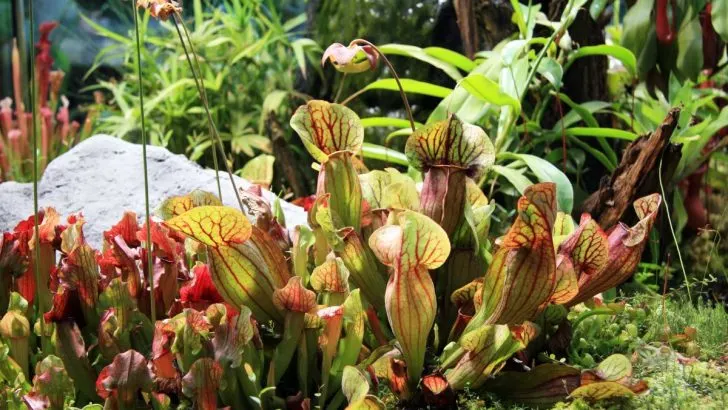Carnivorous plants have always captured the fascination of botanists and hobbyists alike. These remarkable flora have evolved to thrive in nutrient-poor environments by developing mechanisms to trap and digest insects and other small prey.
This guide explores 15 of the most captivating carnivorous plants, each with unique adaptations that make them both intriguing and essential to their habitats.
Venus Flytrap
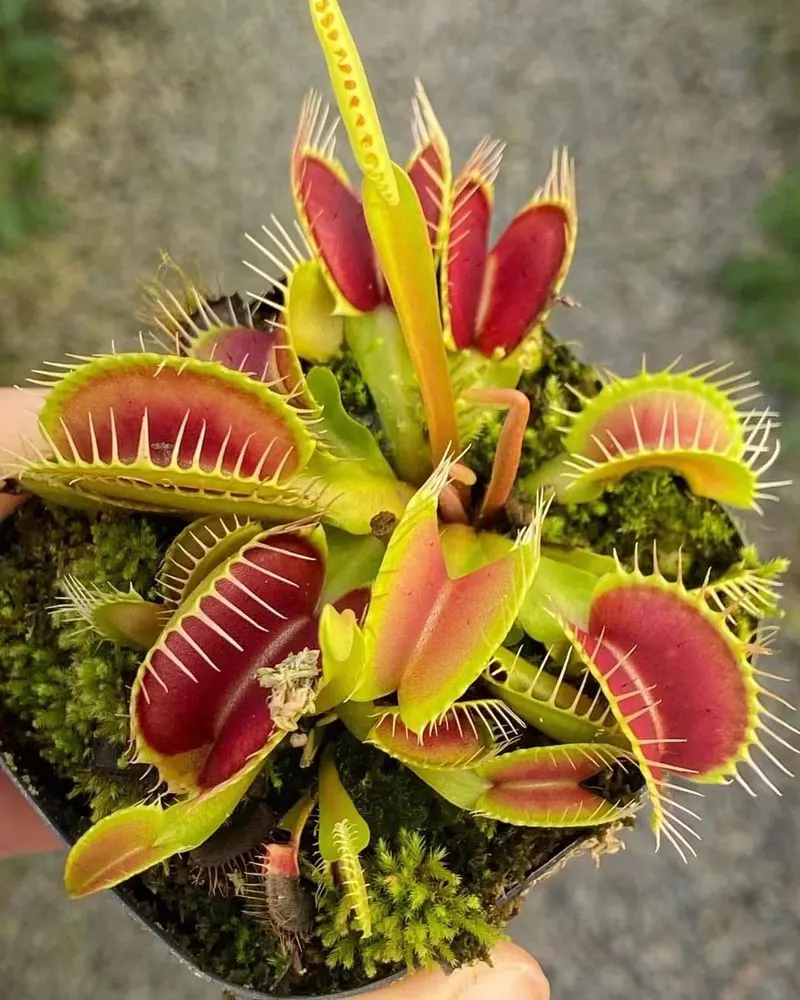
The Venus Flytrap is perhaps the most iconic of all carnivorous plants, known for its jaw-like traps. These traps are designed with fine hairs that trigger a rapid closing motion when prey touches them.
Found natively in the subtropical wetlands of the East Coast of the United States, it uses a clever mechanism to ensure energy-efficient trapping. After capturing an insect, the plant secretes digestive juices to dissolve the prey, absorbing essential nutrients.
Its ability to count touches to trigger closing distinguishes it from other plants. This fascinating evolutionary trait helps conserve energy, making it a marvel of nature.
Sundew
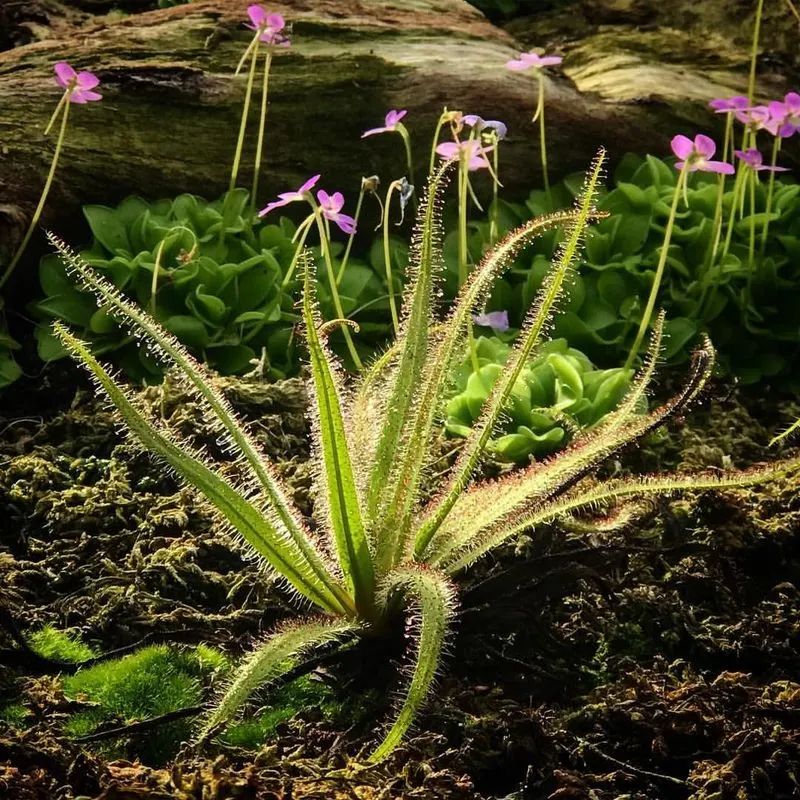
Sundews possess sticky, glandular hairs that sparkle with dewdrops, luring unsuspecting insects. When an insect lands, it becomes ensnared in the sticky secretion.
The plant’s tentacles then slowly curl around the prey, initiating digestion. Native to a wide range of environments, from tropical to temperate regions, Sundews showcase remarkable adaptability.
Each species exhibits unique coloration and trapping styles, contributing to their allure. Their ability to thrive in nutrient-deficient soils by supplementing with insect-derived nutrients is a testament to their evolutionary success.
Sundews are captivating examples of botanical ingenuity.
Pitcher Plant
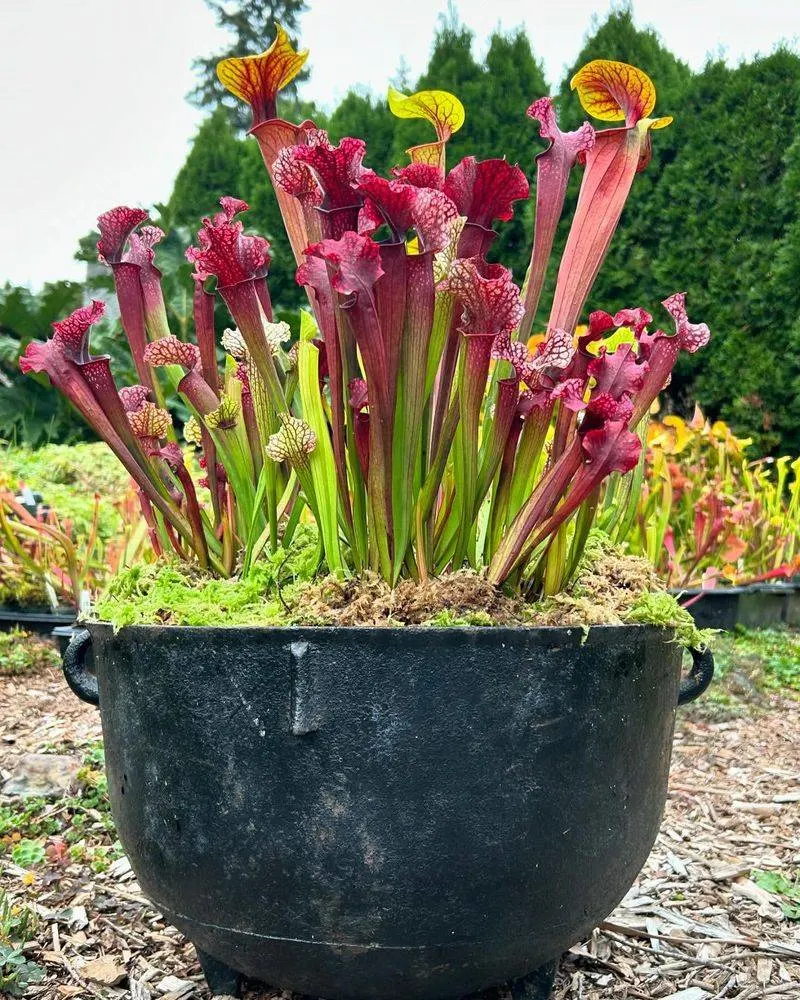
Pitcher plants are characterized by their deep, pitcher-shaped leaves that function as pitfall traps. These hollow structures contain a digestive liquid that breaks down trapped insects.
Native to regions like North America, Asia, and Australia, pitcher plants have adapted to various climates. Their striking colors and patterns attract prey, while downward-pointing hairs and slippery surfaces prevent escape.
The plant absorbs nutrients from decomposed insects, aiding survival in nutrient-poor soils. Their diverse forms and trapping methods make them fascinating subjects of study.
The fluid-filled pitchers are a testament to nature’s adaptability and creativity.
Butterwort
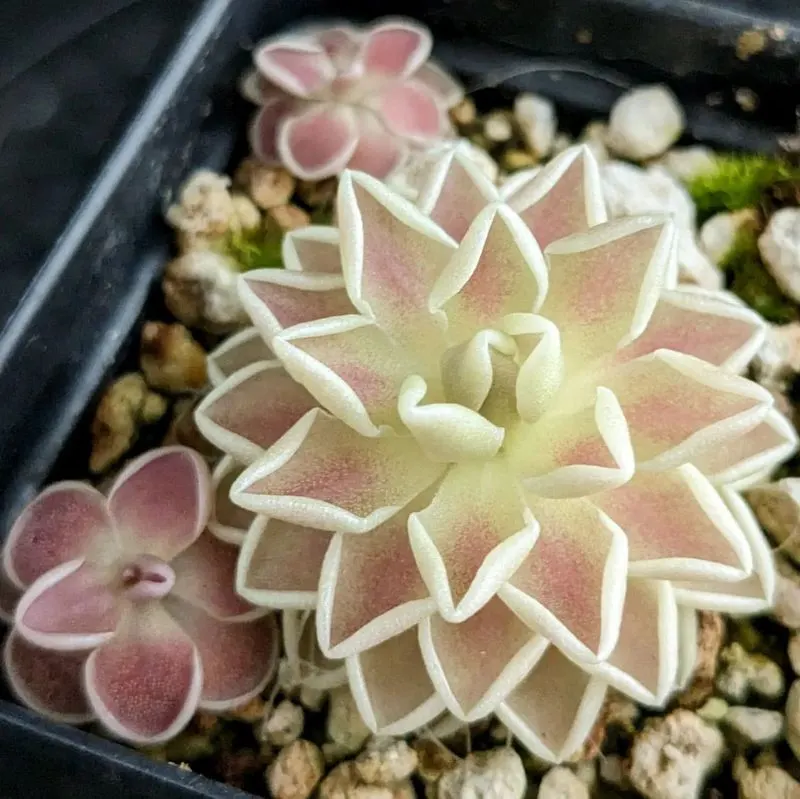
Butterworts lure insects with their sticky, gland-covered leaves that resemble butter. When prey settles, it becomes ensnared in the mucilage.
The leaf margins roll inward, enveloping the insect to facilitate digestion. Found across Europe, North America, and South America, these plants thrive in moist, rocky environments.
Their vivid flowers add to their visual appeal, often contrasting sharply with their sticky traps. Butterworts utilize enzymes to break down prey, absorbing essential nutrients.
Their dual role as insect predator and producer of beautiful blooms makes them unique among carnivorous plants. A fascinating example of evolutionary adaptation.
Bladderwort
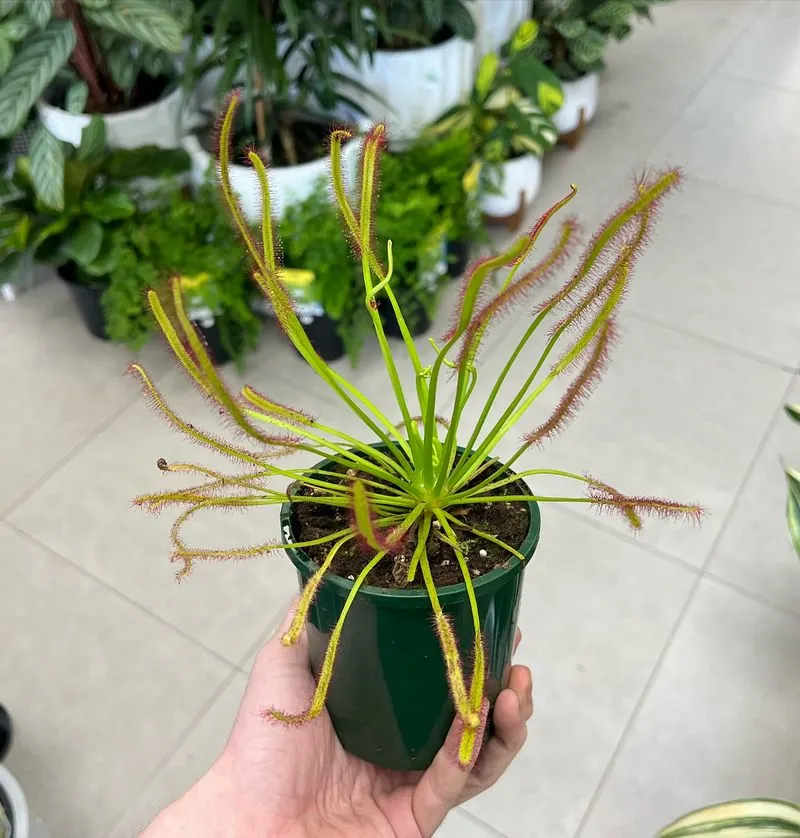
Bladderworts are remarkable aquatic carnivorous plants that capture prey with bladder-like traps. These traps create a vacuum, sucking in tiny aquatic creatures when triggered.
Found in freshwater habitats worldwide, bladderworts showcase incredible underwater adaptation. They absorb nutrients from their prey, enabling survival in nutrient-scarce environments.
The plant’s intricate trapping mechanism is one of the fastest in the plant kingdom. Despite lacking roots, bladderworts remain anchored and thrive submerged.
Their small yet efficient traps highlight nature’s ingenuity, making them captivating to both scientists and plant enthusiasts. They exemplify the complexity and diversity of plant adaptations.
Monkey Cup
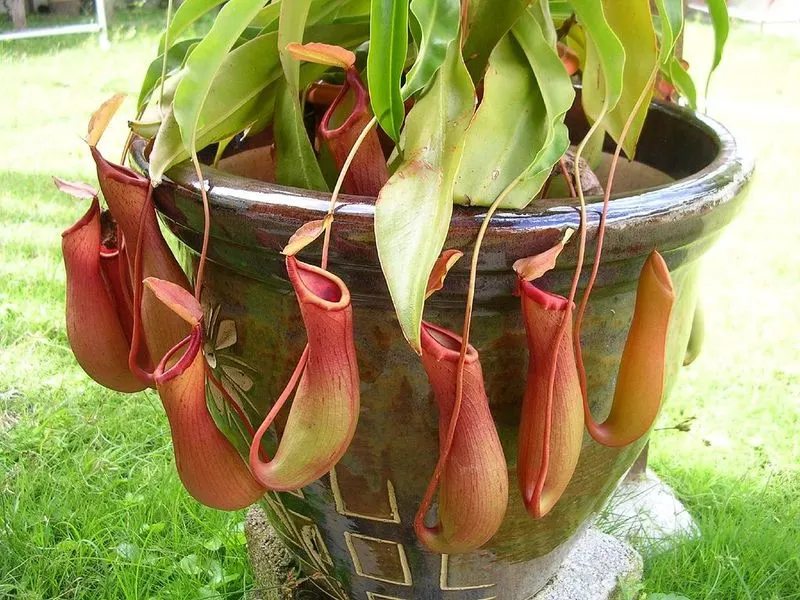
The Monkey Cup, or Nepenthes, is renowned for its large, vibrant pitchers that dangle from tendrils. These pitchers contain a fluid that digests trapped insects and even small vertebrates.
Native to Southeast Asia, these plants thrive in humid, tropical climates. Their pitchers are equipped with a slippery rim, preventing prey escape once inside.
The diverse shapes and sizes of Monkey Cups are adapted to different prey and environments. Their ability to capture such a wide range of prey makes them essential to their ecosystems.
They are a striking example of evolutionary specialization in the plant world.
Cobra Lily
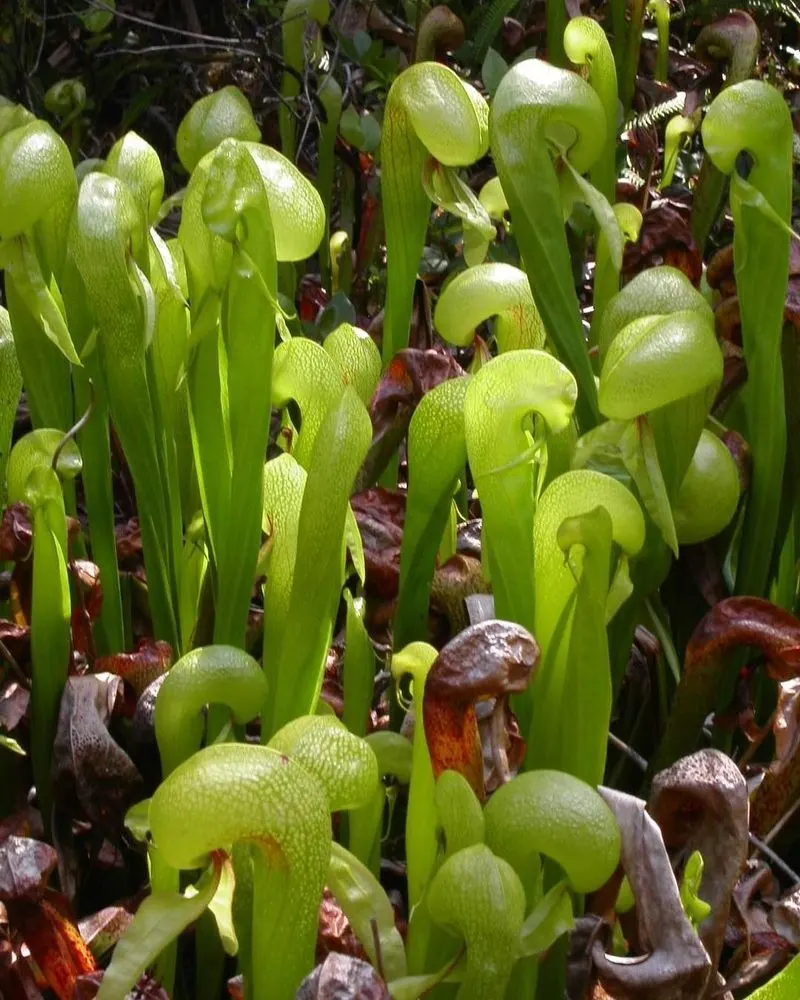
Cobra Lilies, or Darlingtonia, are named for their snake-like appearance, with hooded leaves resembling a cobra’s head. Native to Northern California and Oregon, they thrive in cool, boggy environments.
Their leaves form a twisting tunnel, trapping insects that enter. Deceptive translucent areas mimic exits, confusing prey while digestive fluids work.
Unlike other carnivorous plants, Cobra Lilies use symbiotic bacteria for digestion, breaking down prey into absorbable nutrients. Their unique appearance and trapping strategy make them a subject of fascination.
Their adaptation to nutrient-poor bogs highlights the diversity of carnivorous plant survival strategies.
Waterwheel Plant
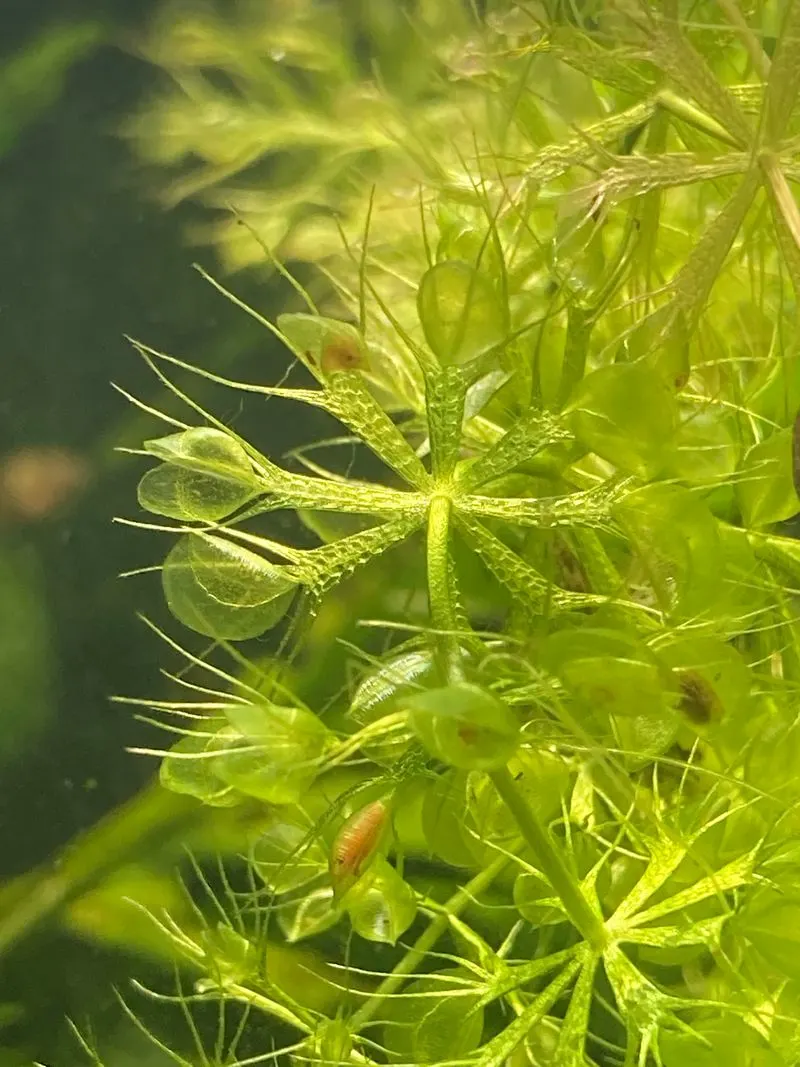
The Waterwheel Plant is a close relative of the Venus Flytrap, known for its rapidly snapping underwater traps. These wheel-like structures capture small aquatic prey with remarkable speed.
Found in Europe, Asia, Africa, and Australia, the plant thrives in freshwater habitats. Lacking roots, it floats freely, relying on its traps to obtain nutrients.
The plant’s rapid trap movement is powered by a similar mechanism as the Venus Flytrap, showcasing convergent evolution. Its unique underwater lifestyle and efficient trapping method make it a fascinating study in plant adaptation.
It’s an impressive example of aquatic carnivory.
Cape Sundew
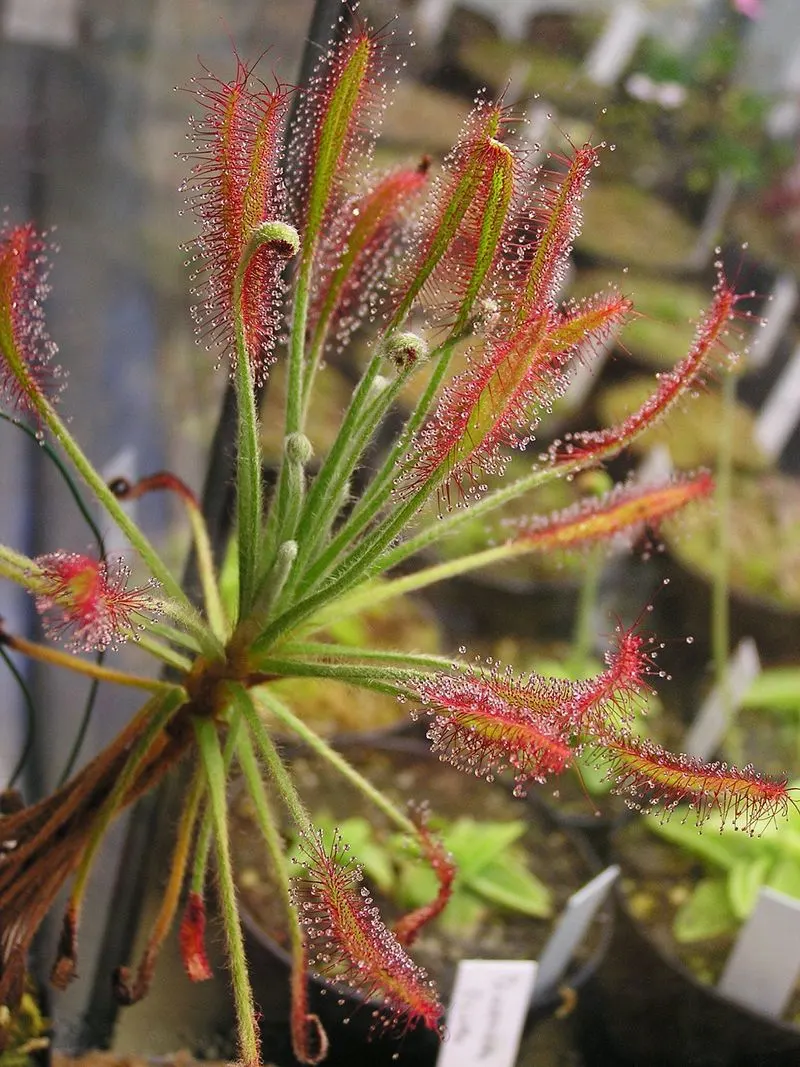
The Cape Sundew, native to South Africa, is a striking carnivorous plant with tentacles covered in sticky droplets. These glistening traps lure and ensnare insects.
As the prey struggles, tentacles wrap around it, beginning digestion. Cape Sundews thrive in sandy soils, absorbing nutrients from their captured prey.
Their beautiful, dew-covered appearance and efficient trapping ability make them popular among carnivorous plant enthusiasts. Their resilience in harsh, nutrient-poor conditions is a testament to their adaptability.
The Cape Sundew is a prime example of nature’s resourcefulness, adapting to its environment with minimal resources.
Australian Pitcher Plant
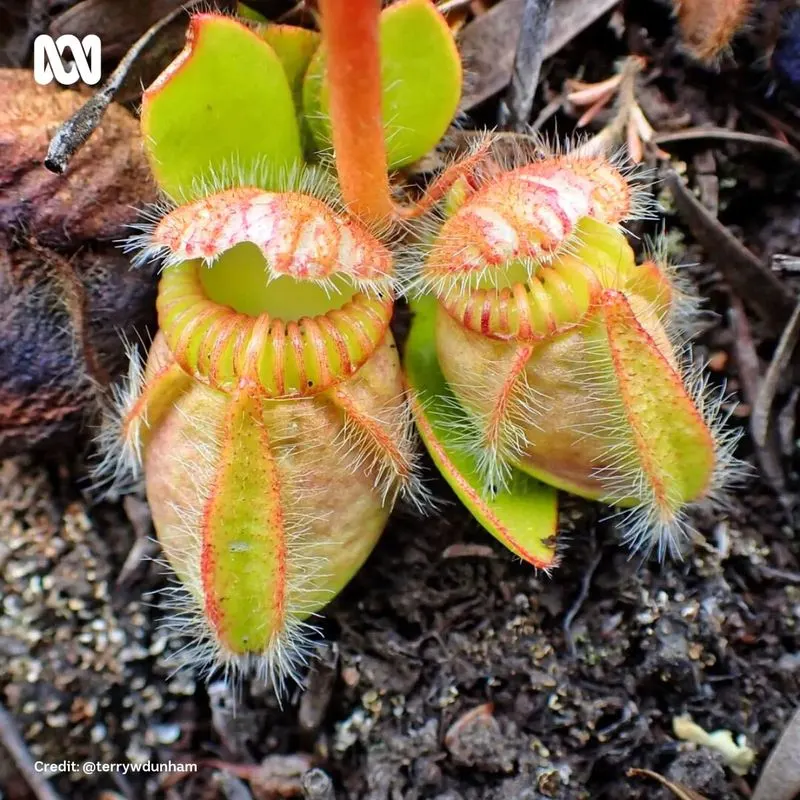
The Australian Pitcher Plant, or Cephalotus, features small, pitcher-shaped leaves that trap insects. These traps contain a fluid that digests prey, allowing the plant to absorb nutrients.
Native to the southwestern coast of Australia, it thrives in sandy, nutrient-poor soils. The plant’s compact size and distinctive pitchers make it a unique addition to carnivorous plant collections.
Its adaptation to arid conditions, including a protective lid over its pitcher to minimize water loss, is noteworthy. The Australian Pitcher Plant’s specialized niche and trapping strategy highlight the diversity of carnivorous plant adaptations.
Albany Pitcher Plant
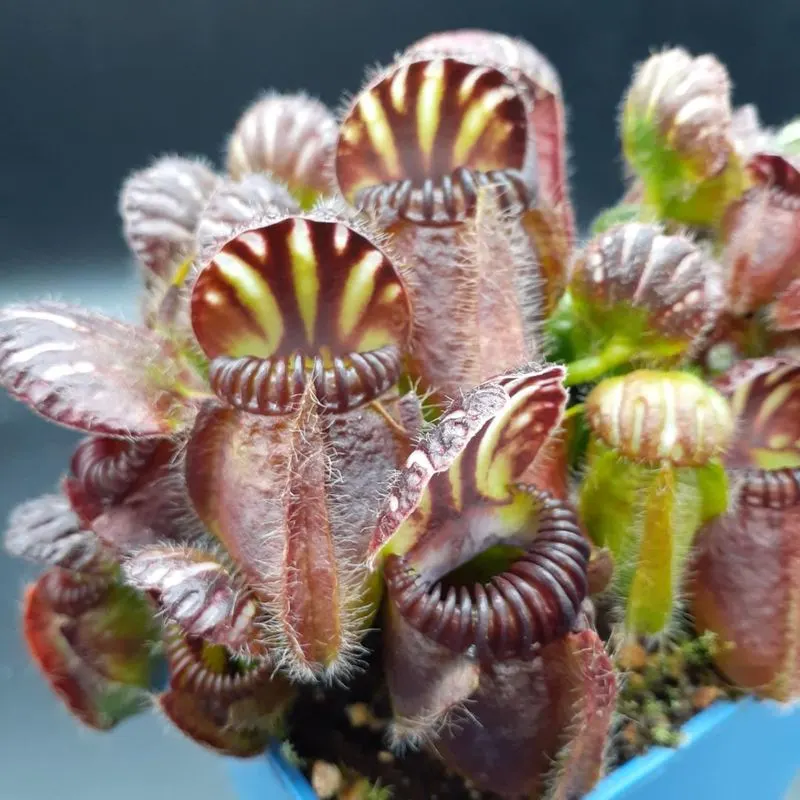
The Albany Pitcher Plant, exclusive to southwestern Australia, is recognized for its small, charming pitchers. These traps capture insects, luring them with nectar and bright colors.
The plant absorbs nutrients from its prey, compensating for nutrient-poor sandy soils. Its ability to withstand dry conditions with minimal resources is remarkable.
This plant’s compact stature and specialized pitchers make it a favorite among collectors. The Albany Pitcher Plant’s evolutionary adaptations are a testament to the resilience of carnivorous plants.
Its survival in harsh environments highlights the ingenious strategies plants develop to thrive.
Roridula
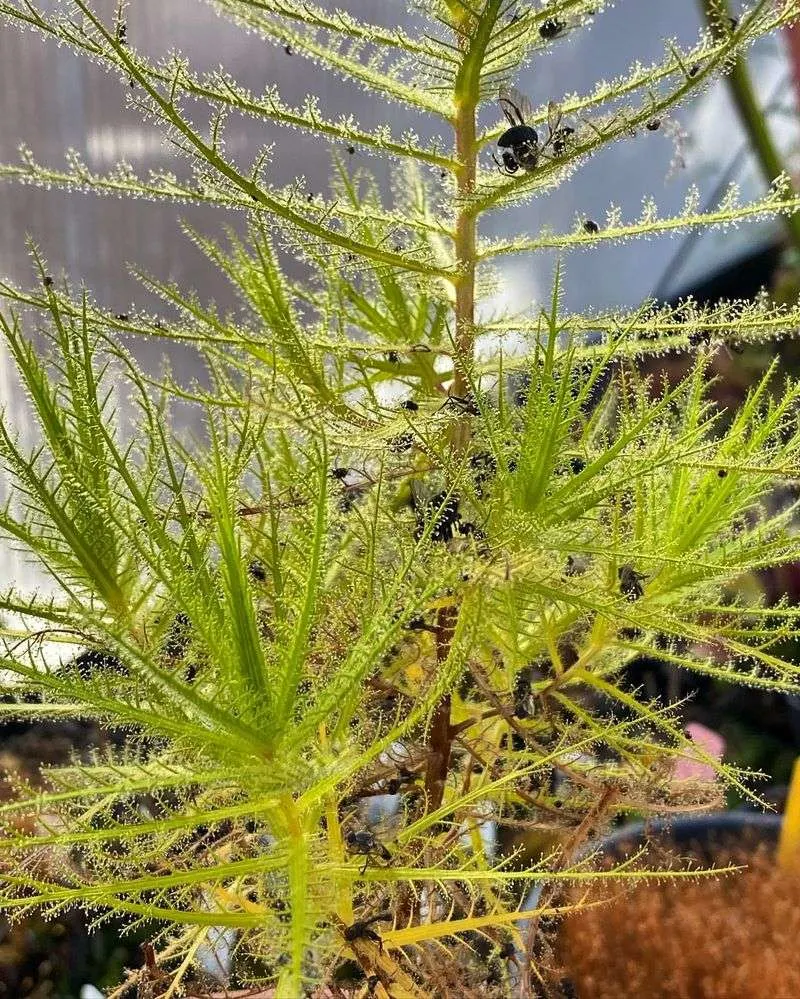
Roridula is unique among carnivorous plants, as it relies on symbiotic insects for digestion. Its sticky leaves trap prey, but instead of digesting it, the plant hosts predatory bugs that consume the trapped insects.
The plant benefits from the nutrients excreted by these insects. Native to South Africa, Roridula thrives in dry, rocky environments.
Its relationship with symbiotic insects is an extraordinary example of mutualism. The plant’s ability to attract and sustain a symbiotic partnership sets it apart from other carnivorous plants, showcasing nature’s collaborative side.
A fascinating study in ecological relationships.
Dewy Pine
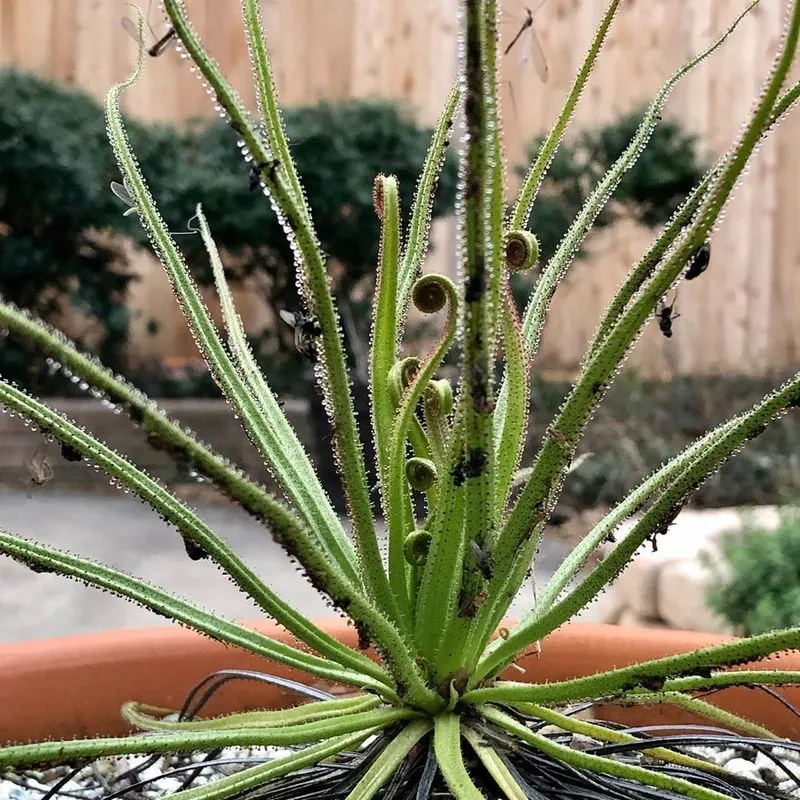
Dewy Pine, or Drosophyllum, is a fascinating carnivorous plant with long, sticky leaves that trap insects. Unlike many carnivorous plants, it thrives in dry, Mediterranean climates.
Its leaves exude a sweet scent, attracting prey that becomes ensnared in sticky secretions. The plant absorbs nutrients through enzymatic digestion.
Dewy Pine’s ability to capture prey in arid environments is a testament to its adaptability. Its resilience and unique trapping mechanism make it a notable addition to carnivorous plant collections.
This plant exemplifies how carnivorous plants can thrive outside typical wet habitats, broadening our understanding of plant survival.
Tropical Pitcher Plant
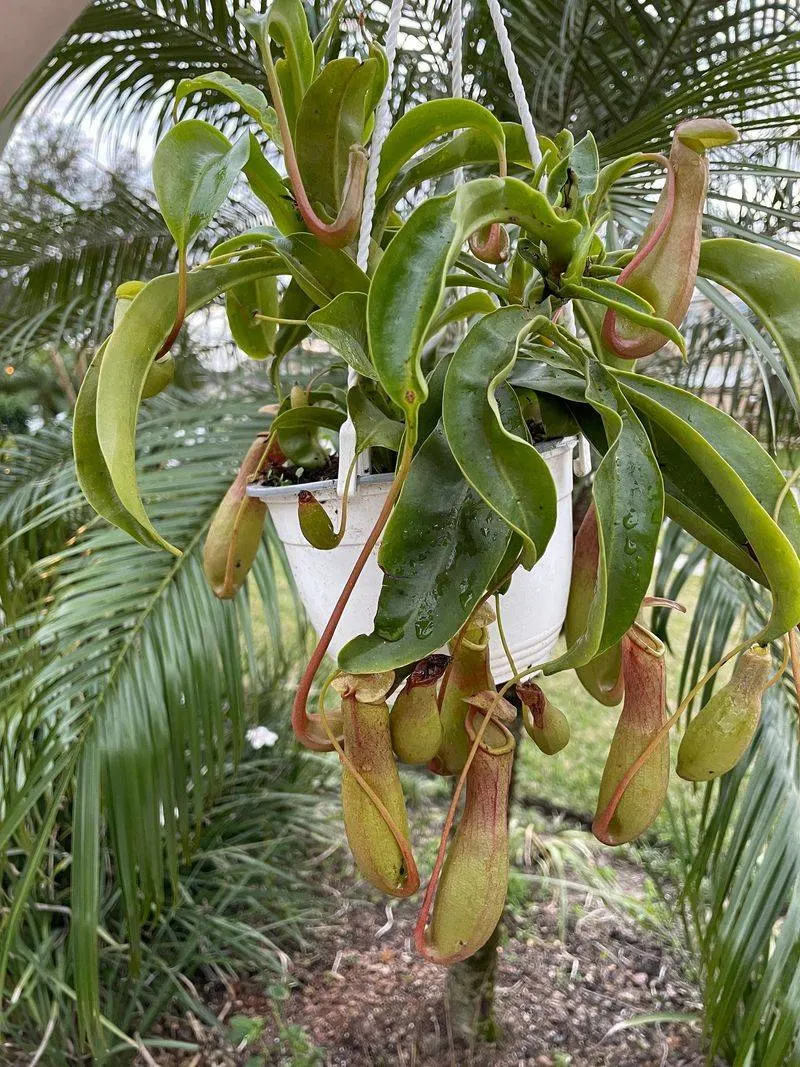
Tropical Pitcher Plants, or Nepenthes, are renowned for their large, hanging pitchers. These plants capture insects and even small vertebrates in their fluid-filled traps.
Native to Southeast Asia, they thrive in humid, tropical jungles. Their pitchers are adapted to capture a wide variety of prey, providing essential nutrients.
The diversity of pitcher shapes and sizes reflects their adaptability to different environments. Tropical Pitcher Plants are a striking example of nature’s ingenuity, showcasing evolutionary specialization.
Their presence supports the delicate balance of their ecosystems, highlighting the importance of biodiversity.
Rainbow Plant
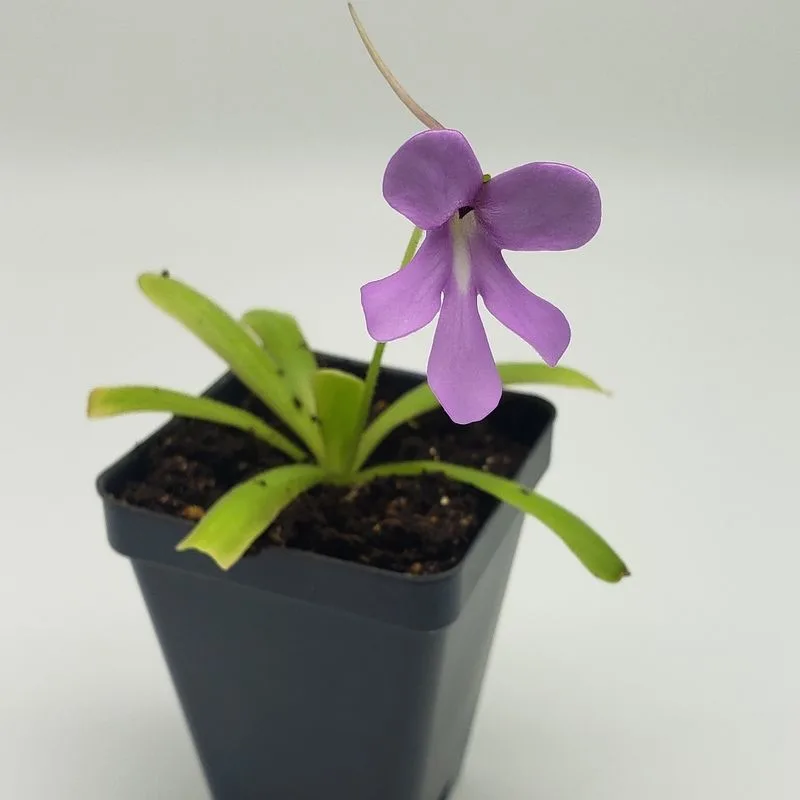
Rainbow Plants, or Byblis, exhibit stunning, brightly colored leaves covered in glandular hairs. These hairs secrete a sticky substance that traps insects.
Native to Australia, Rainbow Plants thrive in sunny, open environments. Their captivating appearance and efficient trapping mechanism make them popular among plant enthusiasts.
The plant absorbs nutrients from its prey, supplementing the nutrient-poor soils it inhabits. Rainbow Plants are an exceptional example of plant adaptation, demonstrating how beauty and functionality can coexist in nature.
Their vibrant hues and effective trapping strategies highlight the diversity of carnivorous plant adaptations.

